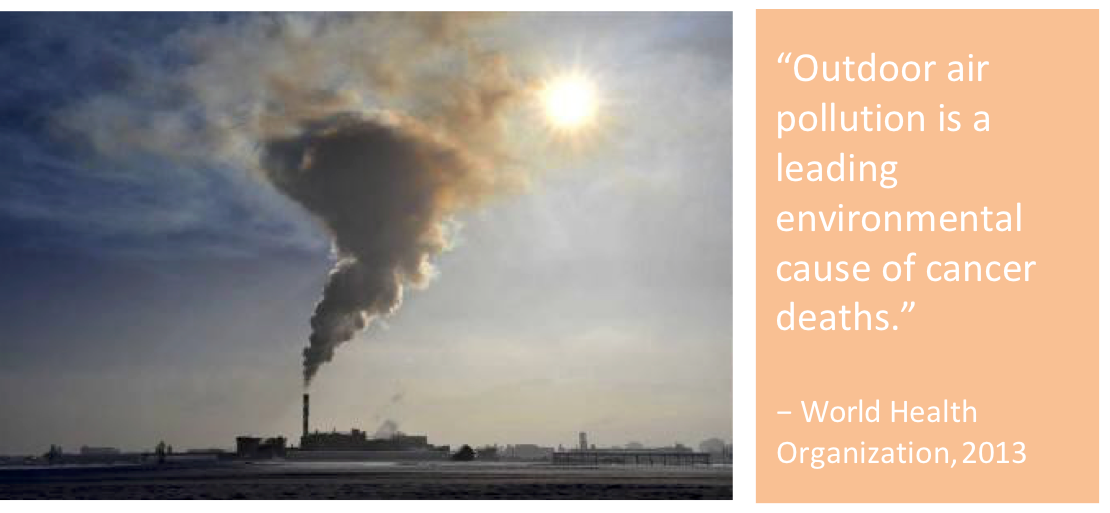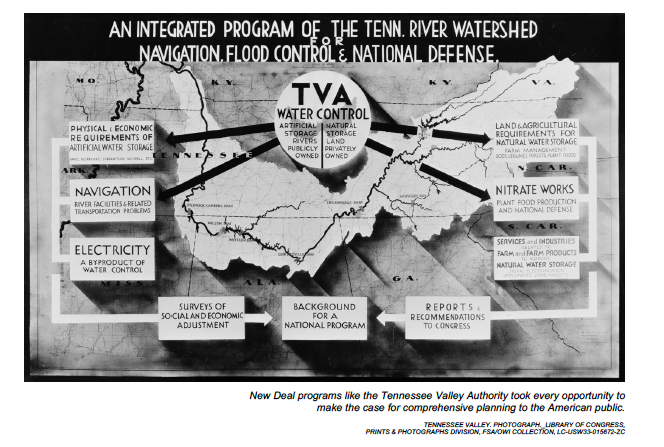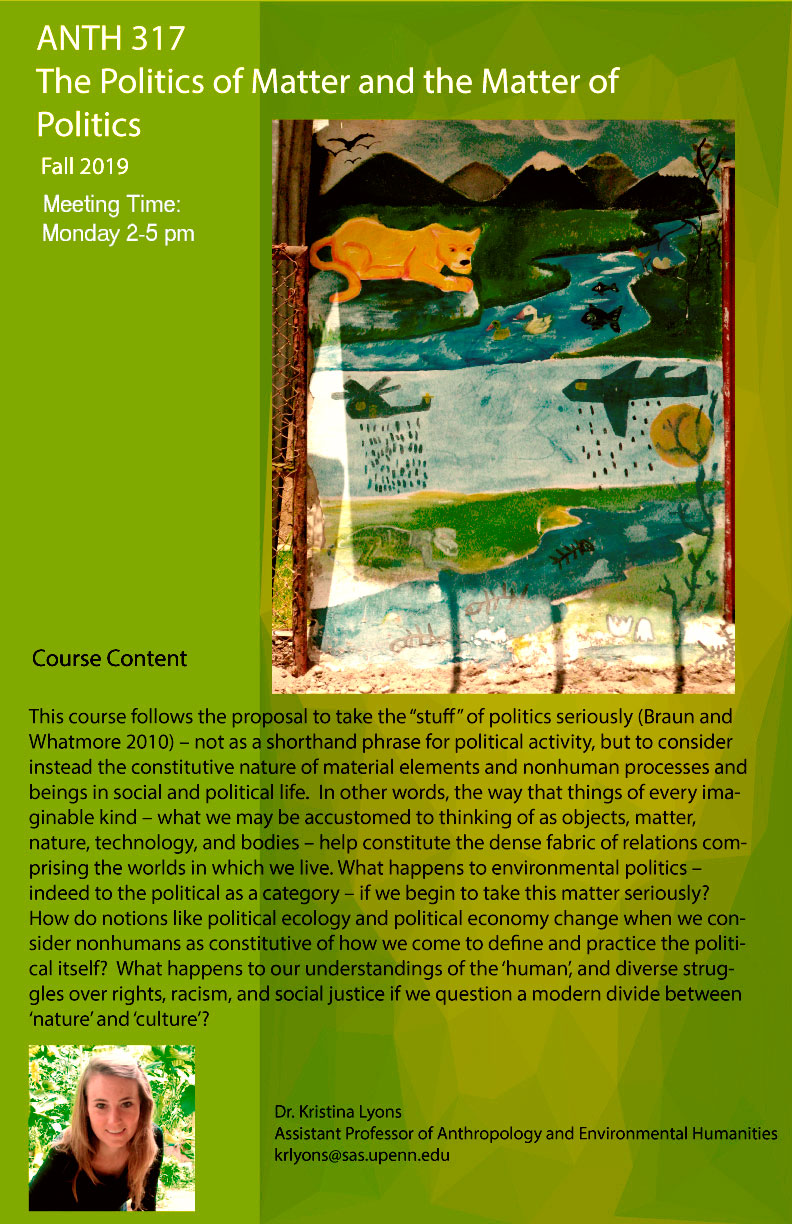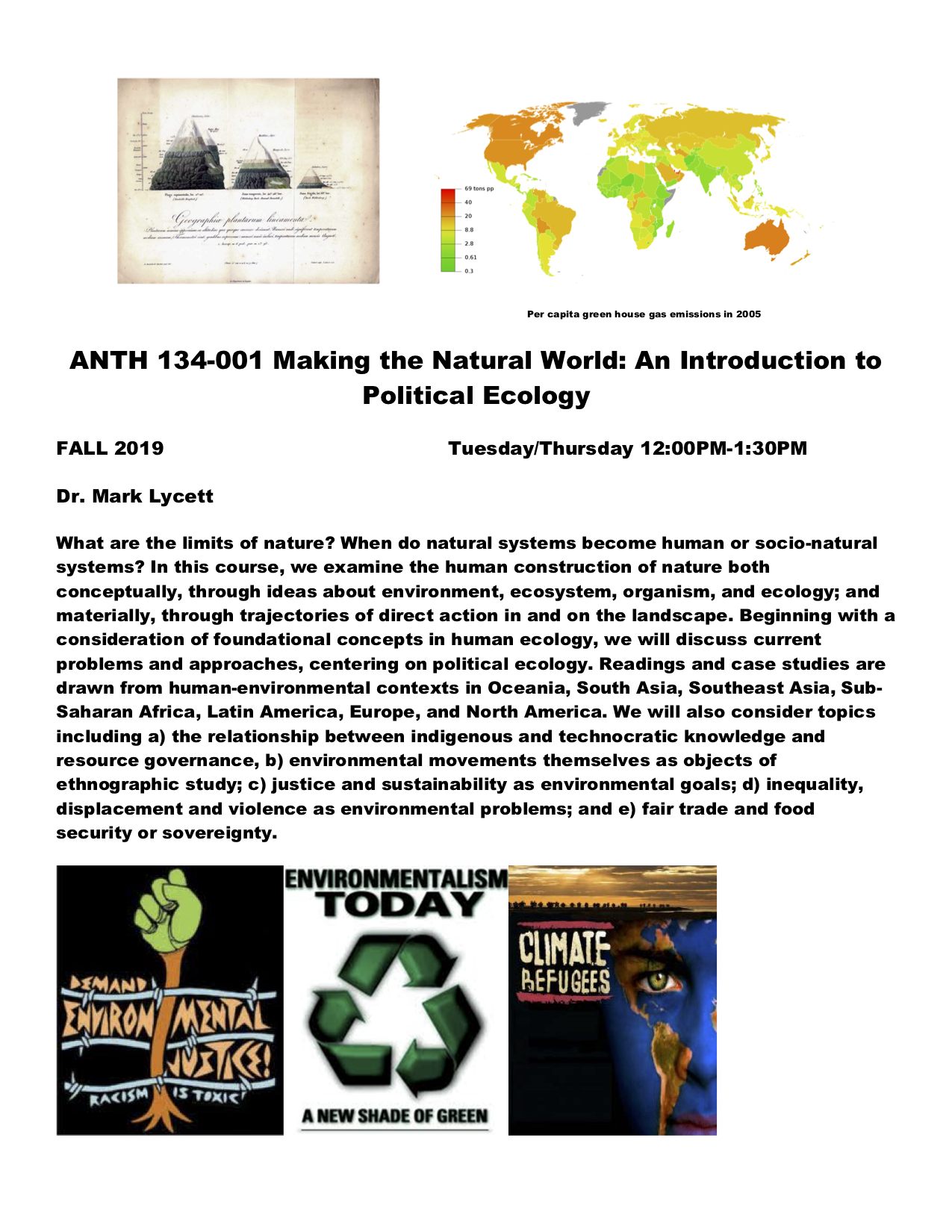Fall 2019
ENGL 392-402 / CIMS 392-402
Rahul Mukherjee
Wednesday 2:00-5:00 PM
We will be engaging with an array of film and media texts and objects to understand the mutual entanglements of media and environment. Media Infrastructures like fiber optic cables are part of the environment and elements mined from the environment find themselves in digital media devices. In this course, we ask: In what ways does the environment shape media? How can we connect the aesthetics and politics of ecocinema? How are theories of viral media and microbial contagion related? How do human and animal bodies live in irradiated environments? How do vulnerable communities document their struggles against resource extractivism? The course is organized in three sections. In the first part, we will be engaging with mediated representations and visualizations of the environment including depictions of ecological disasters and GIS modeling of climate change. What can radiation detectors and mapping technologies tell us about the interaction between bodies and radiation? The second section shall deal with the environmental impact of media infrastructures such as the energy dynamics of data servers/cloud computing. Towards the end of the course, we examine ways of conceptualizing media as environment with a particular focus on media geology and media ecology as research methods to study media phenomena.
This course is a Ben Franklin Seminar.
Fall 2019
ENVS 411
Marilyn Howarth
Maria Antonia Andrews
Tuesday/Thursday, 3:00 - 4:20 PM

This course will focus on Philadelphia's air quality and how air pollutants have an adverse effect on the health of residents. Students will gain an understanding of the sources, fate, and environmental impacts and health effects of air pollutants.
Through a partnership with Philadelphia Air Management Services, students will learn to measure PM2.5 in outdoor and indoor settings and develop community-based outreach tools to effectively inform the community of Philadelphia regarding air pollution.
Fall 2019
STSC 379 / HSOC 379
Ann Norton Greene
Tuesday/Thursday, 12 - 1:30 PM
This course considers human-animal relationships as they have developed over time. How have humans and animals co-evolved? How do humans think about animals and classify animals? Why is there a boundary between humans and other animals, and how is it defined and maintained? What do humans know about animals and how do they know it?
In particular, the course examines how the sites and knowledge about animals and human-animal relationships developed and changed within the fields of technology, medicine and science after the mid-19th century. How do animals become technologies? How do animal sciences and medicine emerge and evolve? We will consider topics such as pets, wildlife, work animals, zoo animals, war animals and lab animals; we will look at evolution, domestication, breeding, archeology, veterinary medicine, ethology, ecology, extinction and predation.
Fall 2019
LA 780-002
Karen M'Closkey
Friday 1:00-4:00 PM

Seeds & Weeds: The Knotty Natures of Botanic Gardens
Department of Landscape Architecture
Botanic gardens may seem a quaint relic at best (Sunday strollers, twirling parasols) or, worse, an outmoded typology (along with zoos and archeology museums) with a sordid history of pillaging and empire building. One could surely argue that these relatively small and bounded spaces are irrelevant in the face of rapid biodiversity loss, massive urbanization, and resource depletion. However, botanic gardens are a locus from which to understand the myriad political, economic, scientific, and social interactions that are central to the discipline of landscape architecture. Botanic gardens combine the science of botany and the art of display as a means to educate, and thus are a useful lens through which to see our changing relationship to nature vis-à-vis plants and plant collections, as well as their representations.
There are upwards of 2500 botanic gardens worldwide, attracting half a billion visitors per year. This is a staggering statistic. These gardens are often in urban areas and are, therefore, accessible to large numbers of people. Unsurprisingly, botanic gardens are not evenly distributed throughout the world, as they are intertwined with the history of colonization, particularly British and Dutch empires. They began as medicinal gardens and were the locus of early scientific research and invention. This scientific mission continues today as botanic gardens evolve to become leaders in conservation efforts. The Botanic Gardens Conservation International is working toward the goals set out by the United Nations Secretariat of the Convention on Biological Diversity’s Global Strategy for Plant Conservation (GSPC). Some of the key objectives of GSPC are education, communication, and public awareness programs about plant diversity. Thus botanic gardens are taking on roles akin to other institutions, from governmental agencies to NGOs and other public-private partnerships. The mission and research foci of botanic gardens continue to adapt to reflect current social and ecological interests and values. What assumptions about conservation undergird the latest research efforts in terms of how these fit into ideas about the circulation of plants and seeds themselves, and also the circulation of nature as capital more generally via botanical garden tourism?
This course will consider the history and the evolution of botanic gardens, focusing on key terms that are at the root of this type of garden and its links to much broader questions about nature and classification. We will look at design precedents by landscape architects, and make visits to nearby botanic gardens. The course will be structured according to the following themes, with readings and guest lecturers from Botany, the History of Science, and Anthropology: Colonization, Classification, Cultivation, and Conservation.
Please contact the instructor (mcloskey@design.upenn.edu) if you are interested in taking this course and are not a student in the Stuart Weitzman School of Design.
Fall 2019
LARP 780-003
Nicholas Pevzner
Mondays, 9AM - 12 PM

The highly ambitious Green New Deal (GND) proposals being introduced in the U.S. Congress aim to rapidly decarbonize the U.S. economy and remake the country’s energy landscape, while providing well-paying jobs for millions of Americans. While the GND is a radical departure from centralized infrastructure planning and environmental politics, it has its roots in historical environmental, labor, and social justice struggles, including Franklin D. Roosevelt’s “New Deal” programs of the 1930s and ‘40s. This seminar will explore the promise and potential of the Green New Deal through both a critical historical reading of FDR’s original New Deal programs, and through techniques of projective futures and scenario-building. Students will use scenarios to develop inspiring and relevant proposals for aggressively tackling climate change through public infrastructure and planning works. We will spend a part of the course unpacking original New Deal regional roads and trails (iconic New Deal highways), regional dam and power networks (the TVA and PWA), electrical grid infrastructure (Rural Electrification Administration), and large-scale environmental conservation (the CCC). The seminar will also tackle the relationship between government programs and radical social change, and explore the role of design and the public imagination implicit in the Green New Deal.
Please contact Nick Pezner at pevzner@design.upenn.edu.
Fall 2019
ANTH 294
Nikhil Anand
Monday/Wednesday, 2:00 - 3:30 PM
Even as the air, earth, and water are being irrevocably transformed in the Anthropocene, cities of the Global South poised to host 90% of the global urban population growth in the next generation. Taken together, environments in cities of the South are critical sites to learn what might become of cities and citizens in the future. Today, these cities continue to be imagined, analyzed, and planned using theoretical frameworks that have been developed by studying a handful of cities in Europe and North America in the middle of the twentieth century. Rather than take these cities to be imperfect models of urbanization compared to cities in the Global North, or of an example of urbanization in a different time, in this class, we attend closely to urban processes on the ground in "most of the world" to ask: How do rapid economic and environmental shifts restructure and reorganize urban space in postcolonial cities? How are economic, racial, and colonial histories and desires reproduced through the everyday practices of urban development? Finally, how and why do marginalized groups live in the city without access to economic and political power? By reading key urban studies texts and ethnographies of cities in Asia, Latin America and Africa, the course will explore how transnational capital, policy, and everyday practice are producing new kinds of cities and “cityness” in most of the world.
In 2019, the course will focus on the environments that cities produce, in particular the ways in which new kinds of environmental crises – water scarcity, climate change, and flooding – challenge urban life both in the Global South and the Global North. How are these crises produced, experienced, and addressed by differentiated urban residents? How might we understand the ways that governments are not/responding to them? As youth and persons of color demand a serious and important response to address the climate emergency, the course concludes with a critical review of efforts to address climate crises in cities in different parts of the world.
Nikhil Anand | Associate Professor of Anthropology | University of Pennsylvania | 215.898.6984 | web | twitter
Fall 2019
COML 544-01 ENVS 543-401, ENGL 643-401, GRMN 543-401, SPAN 543-401
Bethany Wiggin
Wednesday 2:00 - 5:00 PM
Environmental Humanities: Theory, Methods, Practice is a seminar-style course designed to introduce students to the trans- and interdisciplinary field of environmental humanities. Weekly readings and discussions will be complemented by guest spearkers from a range of disciplines including ecology, atmospheric science, computing, history of science, medicine, anthropology, literature, and the visual arts. Participants will develop their own research questions and a final project, with special consideration given to building the multi-disciplinary collaborative teams research in the environmental humanities often requires.
Fall 2019
URBS 344, ANTH 344, CIMS 344
Thursdays 4:30 - 7:30 PM
How do moving image media enable inquiry into core urban studies questions or topics? What can video art, experimental documentary, and sensory ethnography teach us about the practice of urban research? How can we build on the traditions of first person and essay cinema to produce compelling documents of our own questions and findings? This course surveys a range of film and video works on themes such as the production of space, urban nature, infrastructure, and collective memory. Taken as a genre, these time-based works provide a powerful model for training scholars’ observational skills, conceptualizing scales of analysis, and engaging broader publics in urban research. In this course, we will explore this audiovisual genre in dialogue with selected theoretical, ethnographic, and case study readings in urban studies. As an advanced theory-practice course, it combines seminar readings and discussion with regular screenings and a series of workshops on photo, video, audio, and postproduction skills.
The course will provide a general fluency in critical urban theory. In dialogue with this scholarship, students will develop and situate their own experimental documentary research projects. While the structure of the course is somewhat fluid, throughout the semester we will emphasize five thematic units and five methodological/technical skills units:
THEMES: urban mediation | urban comparison | race and space | urban nature | gender, sexuality and the urban
SKILLS: site studies | camera basics | sound recording basics | archival and third-party images | video editing


